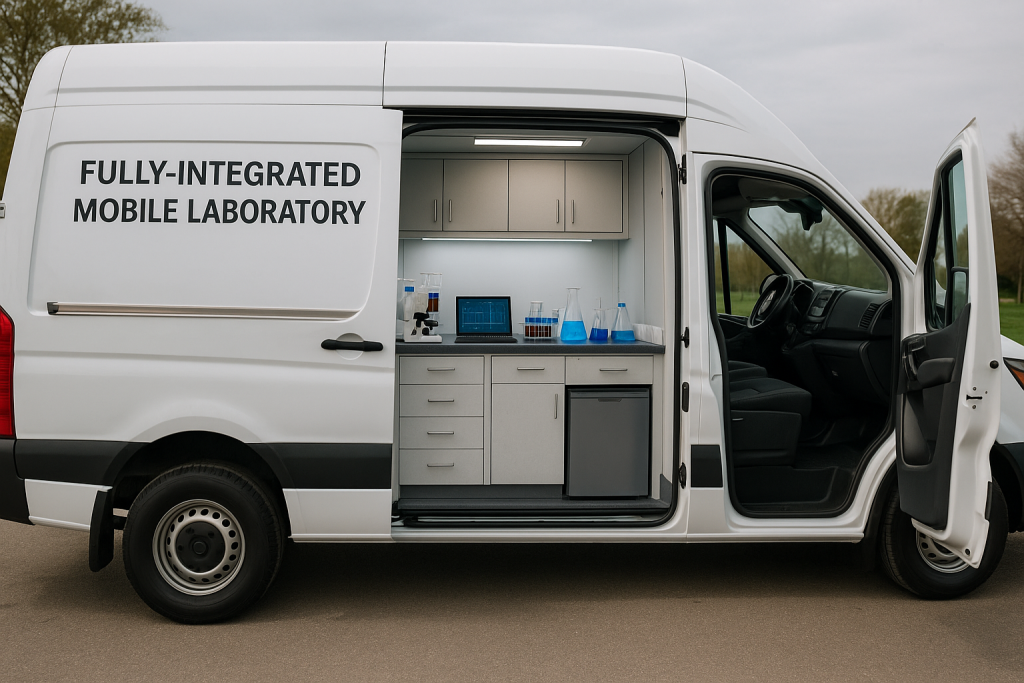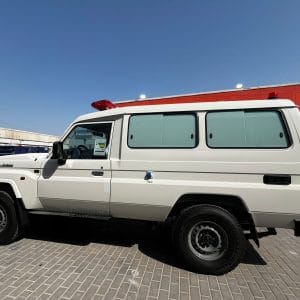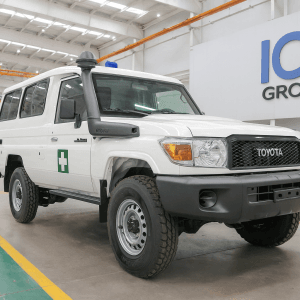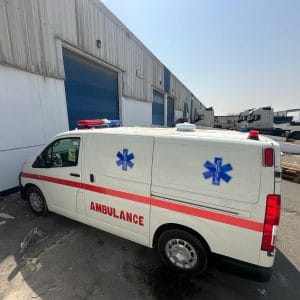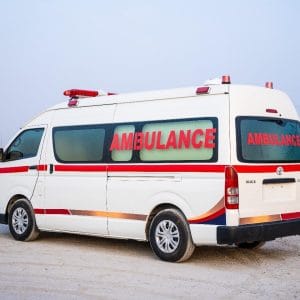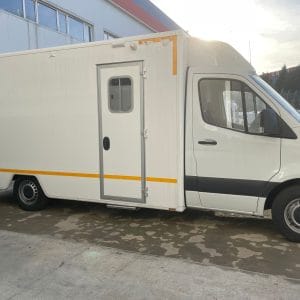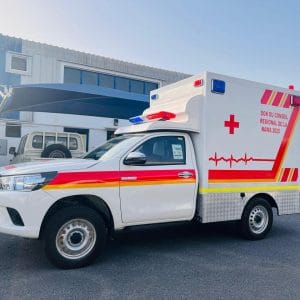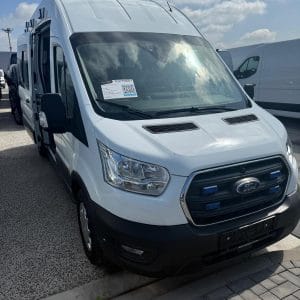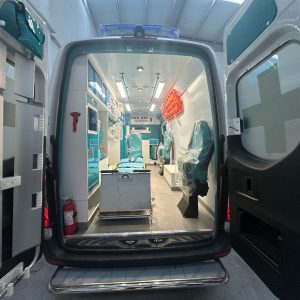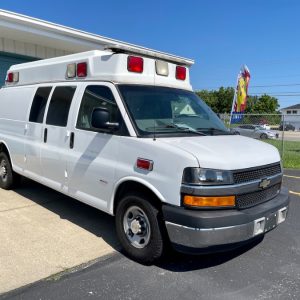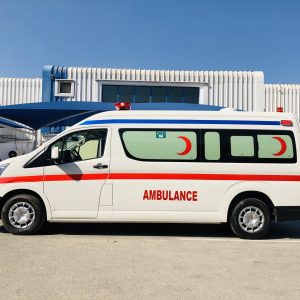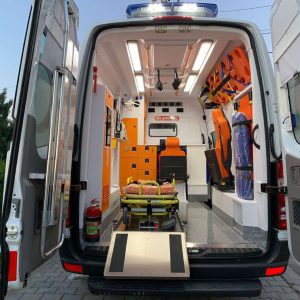Fully-Integrated Mobile Laboratory; In an increasingly unpredictable world, where pandemics and natural disasters can strike without warning, the ability to rapidly deploy diagnostic capabilities is a cornerstone of modern public health. The need for on-site, immediate analysis in remote or crisis-stricken areas has never been more critical. This is where the concept of a mobile laboratory transitions from a luxury to an absolute necessity.
Recently, a detailed technical specification was released for a state-of-the-art Double Cabin Pickup Integrated Type II Tent Mobile Laboratory. This isn’t just a vehicle with some equipment; it’s a comprehensive, self-sufficient ecosystem designed to operate independently in the most challenging conditions. Let’s break down this impressive piece of public health engineering and explore why it represents the gold standard in rapid response.
The Core Concept: Mobility Meets Capability
The primary mission of this mobile lab is clear: to provide the General Directorate of Public Health, Department of Microbiology Reference Laboratories and Biological Products with a deployable unit for use in disasters and emergencies. It’s engineered to be a complete “lab in a box,” or more accurately, a “lab in a truck and a trailer,” capable of being operational within 90 days of order.
The entire system is built around a robust 4×4 Double Cabin Pickup Truck, transforming it from a simple transport vehicle into the nerve center of a field operation. The integration is seamless, comprising a telescopic living cabin, a custom trailer, an inflatable tent lab, and a full suite of laboratory equipment.
Component 1: The Workhorse – The 4×4 Double Cabin Pickup
The vehicle is the backbone of the entire operation. The specifications leave no room for compromise:
- Zero-Kilometer & 2024 Model: Ensuring reliability and the latest technology.
- Power & Drivetrain: A minimum 150 HP diesel engine with a 4×4 drivetrain and automatic transmission for navigating tough terrain.
- Fuel Capacity: An 80-liter fuel tank (excluding AdBlue) ensures extended operational range far from fuel stations.
- Advanced Safety Systems: It must include lane-keeping assist, tire pressure monitoring, cruise control, hill-start assist, and light/rain sensors. This isn’t just for comfort; it’s for the safety of the valuable personnel and equipment during long, stressful deployments.
- Utility Ready: Equipped with a certified tow hitch and electrical connections for the trailer.
This vehicle is chosen not just to get from A to B, but to serve as a stable, secure, and powerful base for the entire mobile lab complex.
Component 2: The Command & Living Module – Telescopic Cabin
Mounted on the pickup’s bed, this ingeniously designed cabin serves a dual purpose. It’s a secure transport case for sensitive equipment during transit and, upon arrival, transforms into a 3-person living quarters.
- Construction: Made from steel and aluminum sheet for durability.
- Dimensions: When deployed, it offers a substantial 300cm x 205cm footprint, with a height of 220cm.
- Self-Contained Systems: It features a full control panel with a 65A gel battery, MPPT solar charge controller, 220V external charging input, USB ports, and internal/external LED lighting.
- Living Amenities: It includes a 45L freshwater tank with an external shower, a diesel-powered heater, and a cleverly designed triple-bed system. This allows the team to rest on-site, which is crucial for sustained operations in a disaster zone.
Component 3: The Mobile Base Camp – The Specialized Trailer
The trailer is far more than a simple cargo carrier; it’s an extension of the laboratory and living space.
- Robust Build: A 4m x 2m x 2m galvanized chassis with a corrosion-resistant metal body.
- Independent Power & Climate: It houses a massive 200A gel battery with a charger, a 5.5 kW diesel heater, and a 65L water tank with a pump.
- Convertible Space: A key feature is the raiseable roof and a 2.5-meter side awning that can be enclosed to create an additional room. This provides critical extra space for administrative work, storage, or as an additional clean area.
- Off-Road Capable: Fitted with all-terrain, mud-and-snow (M+S) tires on 15-inch steel alloy rims, ensuring it can follow the pickup anywhere.
Component 4: The Main Laboratory – The Inflatable Tent
For the primary laboratory workspace, the specification calls for a versatile, four-season inflatable tent with a minimum area of 20 square meters.
- Rapid Deployment: Using an integrated compressor, it can be set up quickly. Its inflatable structure is robust, wind-resistant, and features a polyester tarpaulin floor.
- Fully Equipped: It comes with a built-in lighting and electrical outlet system, capable of being powered by the grid or the portable generator. A 25-meter power cable reel is included for connectivity.
- Configurable: The interior can be divided into two separate compartments, allowing for segregated workflows (e.g., a clean pre-PCR area and a post-amplification area).
The Heart of the Operation: Laboratory & Diagnostic Equipment
This is where the mobile lab proves its worth. The list of equipment is meticulously curated for a wide range of microbiological and molecular diagnostics.
1. Sample Preparation & Analysis:
- Portable PCR Cabinet & Isolators: Two portable, foldable isolators with HEPA-filtered air intake and glove ports are specified for safe handling of high-risk pathogens and master mix preparation. A separate PCR cabinet provides a clean workspace for amplification steps. Both are required to be equivalent to the Lamsystems X-Bio module, indicating a demand for proven, high-quality containment.
- Centrifuges: A suite of three mini centrifuges (5,000 RPM, 14,000 RPM, and a mini-spin) covers all needs from quick spins to high-speed pelleting, all designed to be compact and safe with locking lids.
- Heating & Mixing: A shaker-type heat block can incubate and agitate samples simultaneously (20-100°C, 300-1000 RPM). Six mini vortex mixers ensure efficient sample mixing.
2. General Lab Support:
- Temperature Control: Two +4°C portable refrigerators (30L) and one -20°C portable freezer (30L) are crucial for storing reagents and samples. A mini incubator (oven) with a 20-32L capacity and precise temperature uniformity (±0.6°C) is included for culturing or other incubations.
- Pipetting: Three sets of high-quality, four-piece adjustable automatic pipettes (covering 0.5µL to 1000µL) are specified. The requirements are detailed, demanding ergonomic design, chemical resistance, easy calibration, and autoclavability. This highlights the need for precision and durability in the field.
- Computing & Data Management: A powerful laptop with a 12th Gen i5 processor, 16GB RAM, and 1TB SSD is included for data analysis and reporting in the field.
Supporting the Mission: Camp Infrastructure & Safety
Understanding that a lab cannot function without its team being safe and comfortable, the specification includes everything needed for a fully operational field camp.
- Power Generation: A 3kW, low-noise (<65 dB) portable petrol generator provides primary or backup power.
- Climate Control: Two portable 7000 BTU water-based air coolers ensure the tent lab remains at a workable temperature.
- Furniture: Six foldable aluminum tables (120x60cm) and eight sturdy, foldable chairs (120kg capacity) create the workstations.
- Safety & Security: A 50-meter long safety barrier fence with stakes allows for the creation of a secure perimeter. Two portable projectors with tripods provide area lighting during night operations.
- Personnel Gear: Ten multi-pocket, all-weather field vests in various sizes (M, L, XL) ensure the team is equipped and identifiable.
- Tool Kit: A comprehensive tool kit is provided, containing everything from wrenches and screwdrivers to a folding shovel and jump-start cables, empowering the team to handle minor mechanical and logistical issues.
Quality, Warranty, and Training: Ensuring Long-Term Success
The specifications go beyond just listing items; they embed quality assurance and operational readiness into the contract.
- Comprehensive Warranty: A full 2-year warranty on all devices and equipment against manufacturing and assembly defects is mandatory.
- Demonstration Rights: The purchasing committee reserves the right to request a demonstration of any item. Suppliers must agree in writing to this, and failure to demonstrate or an unsuccessful demo can lead to rejection. This ensures that only equipment that performs as promised is accepted.
- Full Training: The supplier must provide comprehensive training for two groups of five personnel each. This ensures the end-users can operate the entire system safely and effectively.
- Documentation: All user manuals, drawings, and flow charts must be delivered with the vehicle.
Conclusion: More Than a Vehicle, A Lifeline
This Integrated Type II Tent Mobile Laboratory is a masterpiece of logistical and scientific planning. It is not merely a collection of parts but a holistic solution designed to deliver advanced diagnostic capabilities to the front lines of a crisis. From the robust 4×4 vehicle and the versatile living cabin to the sophisticated PCR isolators and the camp infrastructure, every detail is meticulously planned to ensure autonomy, reliability, and safety.
For public health authorities, emergency response teams, and disaster management agencies worldwide, this specification serves as a benchmark. It demonstrates how mobility, molecular biology, and field logistics can be fused into a single, powerful tool—a tool that can save lives by delivering answers where they are needed most: right at the heart of the crisis.
Keywords for SEO: Mobile Laboratory, Disaster Response, Public Health, Field Lab, PCR Testing, 4×4 Mobile Lab, Portable Isolator, Deployable Lab, Emergency Diagnostics, Biosafety, Microbiology, Tent Lab, Pickup Truck Lab, Crisis Management, Rapid Deployment, HEPA Filter, Sample Analysis, SEOWriting, Public Health Infrastructure.


